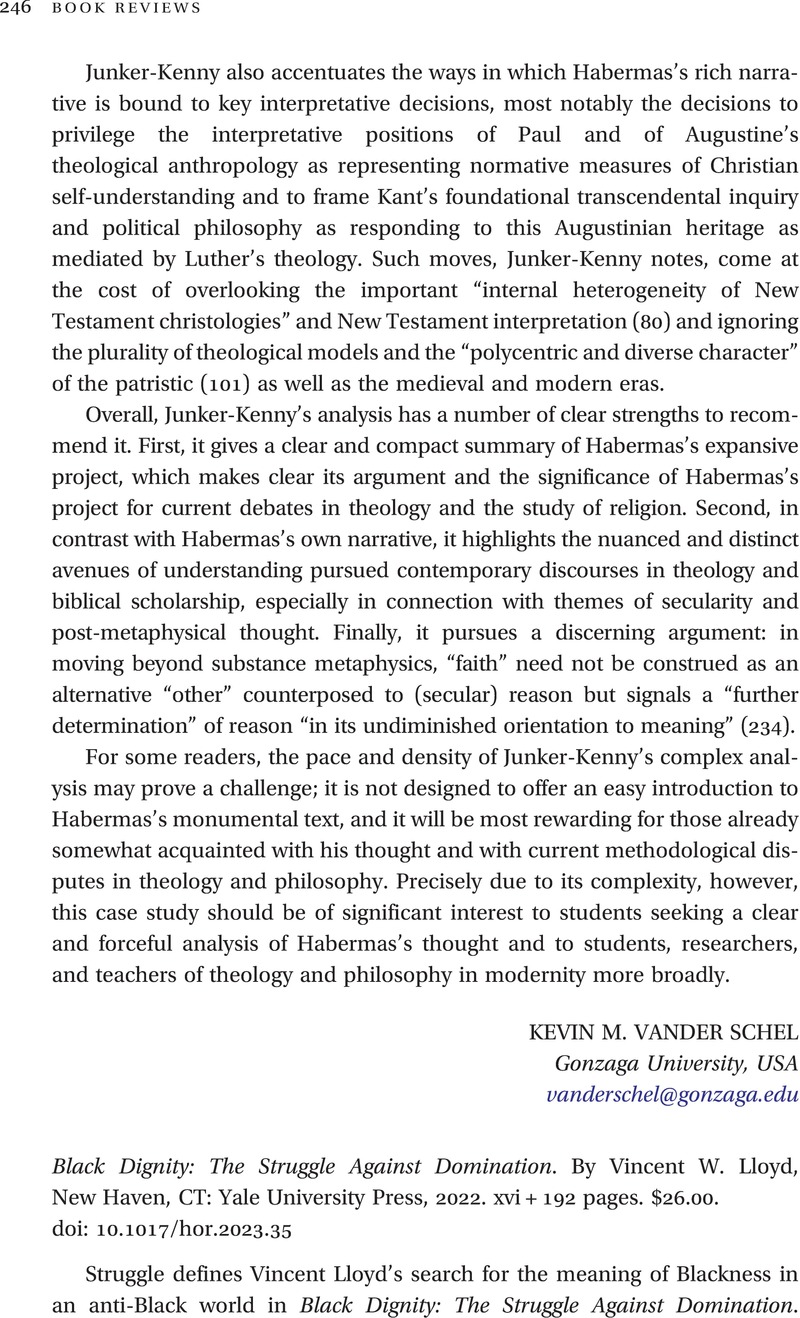No CrossRef data available.
Black Dignity: The Struggle Against Domination. By Vincent W. Lloyd, New Haven, CT: Yale University Press, 2022. xvi + 192 pages. $26.00.
Review products
Black Dignity: The Struggle Against Domination. By Vincent W. Lloyd, New Haven, CT: Yale University Press, 2022. xvi + 192 pages. $26.00.
Published online by Cambridge University Press: 19 June 2023
Abstract
An abstract is not available for this content so a preview has been provided. Please use the Get access link above for information on how to access this content.

- Type
- Book Review
- Information
- Copyright
- Copyright © College Theology Society 2023



